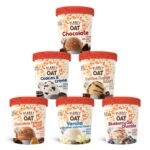Imagine a vibrant backyard scene, filled with the tantalizing aroma of sizzling food and laughter, yet completely safe for guests with allergies. This isn’t a dream; it’s the reality of planning a delicious and worry-free BBQ. This guide provides a comprehensive roadmap to creating a memorable event where everyone, regardless of dietary restrictions, can enjoy the quintessential summer feast. We’ll explore creative allergen-free recipes, safe food handling techniques, and essential planning strategies to ensure a fun and inclusive gathering.
From succulent allergen-free main courses – think flavorful beef, poultry, and exciting vegetarian options – to a delightful array of side dishes and desserts, we’ll cover every aspect of crafting a complete and safe menu. Learn how to navigate common allergens, find delicious substitutes, and prevent cross-contamination, all while maintaining the vibrant flavors and fun atmosphere of a classic backyard BBQ. We’ll also equip you with practical checklists and clear signage examples to manage different allergies efficiently and effectively.
Allergen-Free BBQ Main Courses

Planning a barbecue that caters to everyone, even those with allergies, requires careful consideration of ingredients and preparation methods. This section provides three delicious and safe main course options, ensuring a fun and inclusive BBQ experience for all. Each recipe is designed to be free from common allergens like gluten, dairy, soy, and nuts, but always double-check ingredient labels to ensure they meet your specific needs.
Allergen-Free BBQ Main Course Recipes
Below are three allergen-free recipes, one each for beef, poultry, and a vegetarian option. These recipes are designed to be flavorful and satisfying while avoiding common allergens. Remember to always check ingredient labels to ensure they are suitable for your guests’ specific dietary needs.
| Recipe | Ingredients | Instructions | Cooking Time |
|---|---|---|---|
| Allergen-Free BBQ Beef Skewers | 1 lb lean beef sirloin, cut into 1-inch cubes 1/4 cup allergen-free BBQ rub (see below) 1 red bell pepper, cut into 1-inch pieces 1 green bell pepper, cut into 1-inch pieces 1 yellow onion, cut into 1-inch pieces |
Marinate beef in BBQ rub for at least 30 minutes. Thread beef and peppers onto skewers. Grill over medium heat for 10-12 minutes, turning occasionally, until beef is cooked through. |
10-12 minutes |
| Lemon Herb Grilled Chicken | 4 boneless, skinless chicken breasts 2 tbsp olive oil 2 tbsp lemon juice 1 tbsp dried oregano 1 tbsp dried rosemary Salt and pepper to taste |
Whisk together olive oil, lemon juice, oregano, rosemary, salt, and pepper. Marinate chicken in mixture for at least 30 minutes. Grill over medium heat for 6-8 minutes per side, until chicken is cooked through. |
12-16 minutes |
| Grilled Portobello Mushroom Steaks | 4 large portobello mushrooms, stems removed 2 tbsp olive oil 1 tbsp balsamic vinegar 1 tsp garlic powder Salt and pepper to taste |
Whisk together olive oil, balsamic vinegar, garlic powder, salt, and pepper. Brush mixture over mushrooms. Grill over medium heat for 5-7 minutes per side, until mushrooms are tender. |
10-14 minutes |
Nutritional Information Comparison
| Nutrient | Beef Skewers (per serving) | Grilled Chicken (per serving) | Portobello Mushrooms (per serving) |
|---|---|---|---|
| Calories | Approx. 300 | Approx. 200 | Approx. 100 |
| Protein (g) | Approx. 30 | Approx. 30 | Approx. 5 |
| Fat (g) | Approx. 15 | Approx. 5 | Approx. 5 |
Allergen-Free BBQ Beef Skewer Preparation Infographic
The infographic would be visually appealing, using bright colors and clear, concise language.
Step 1: Image: A bowl of cubed beef sirloin being tossed with a vibrant red and brown allergen-free BBQ rub. Text: “Marinate the beef: Toss the beef cubes generously with the allergen-free BBQ rub. Let it sit for at least 30 minutes to allow the flavors to penetrate.”
Step 2: Image: Close-up shot of colorful bell peppers and onions being cut into 1-inch pieces. Text: “Prep the vegetables: Chop the bell peppers and onions into bite-sized pieces. Choose a variety of colors for visual appeal.”
Step 3: Image: A person carefully threading the marinated beef and colorful vegetables onto skewers. Text: “Assemble the skewers: Thread the beef and vegetables onto skewers, alternating between meat and vegetables for even cooking and attractive presentation.”
Step 4: Image: The skewers sizzling on a hot grill, with smoke gently rising. Text: “Grill to perfection: Grill the skewers over medium heat for 10-12 minutes, turning occasionally, until the beef is cooked through and the vegetables are tender-crisp.”
Step 5: Image: A platter of beautifully grilled beef skewers, ready to serve. Text: “Serve and enjoy: Remove the skewers from the grill, let them rest for a few minutes, and serve immediately. Garnish with fresh herbs if desired.”
Common BBQ Rubs and Marinades and Allergen-Free Substitutions
Many commercially available BBQ rubs and marinades contain common allergens such as gluten (from wheat flour or soy sauce), dairy (in the form of butter or cheese), soy (soy sauce, soy protein), and nuts. This list details common ingredients and their allergen-free substitutes.
Common Allergens in BBQ Rubs and Marinades: Wheat flour, soy sauce, dairy products (butter, milk, cheese), nuts (peanuts, almonds, etc.), MSG.
Allergen-Free Substitutes: For wheat flour, use cornstarch or tapioca starch as a thickener. For soy sauce, use coconut aminos or tamari (ensure it’s gluten-free certified if gluten is a concern). For dairy, use olive oil or coconut oil for richness and creaminess. Avoid nuts entirely. For MSG, use alternative seasonings such as onion powder, garlic powder, or herbs.
Safe Side Dishes for Allergy Sufferers
Planning a backyard BBQ that caters to guests with allergies requires careful consideration of every dish. Side dishes, often overlooked, can be significant sources of cross-contamination or contain hidden allergens. The following recipes offer delicious and safe alternatives, ensuring everyone can enjoy the festivities. Each recipe is meticulously designed to be free from the top eight allergens: milk, eggs, peanuts, tree nuts, soy, wheat, fish, and shellfish.
Allergen-Free Side Dish Recipes
Choosing the right side dishes is crucial for a successful and safe allergy-friendly BBQ. These recipes offer a variety of flavors and textures, ensuring there’s something for everyone to enjoy without compromising safety.
- Grilled Corn Salad with Lime Dressing: A vibrant and refreshing salad featuring grilled corn kernels, red bell peppers, red onion, cilantro, and a zesty lime dressing. The natural sweetness of the corn is beautifully complemented by the tangy lime. [Link to Recipe: https://www.example.com/corn-salad]
- Rainbow Veggie Skewers with Herb Marinade: Colorful skewers brimming with cherry tomatoes, zucchini, bell peppers, and red onion, marinated in a blend of fresh herbs like oregano, basil, and thyme. The vibrant colors and fresh flavors make these skewers a visual and culinary delight. [Link to Recipe: https://www.example.com/veggie-skewers]
- Classic Potato Salad (Dairy-Free): A creamy potato salad made without mayonnaise, using a dairy-free alternative like avocado or a cashew-based cream. The potatoes are cooked until tender, then mixed with celery, onion, and a vibrant dairy-free dressing. [Link to Recipe: https://www.example.com/potato-salad]
- Watermelon and Feta Salad (Dairy-Free Option): A refreshing summer salad featuring juicy watermelon chunks, crumbled dairy-free feta cheese (many brands offer allergen-free options), and fresh mint leaves. The sweetness of the watermelon is balanced by the salty feta and refreshing mint. [Link to Recipe: https://www.example.com/watermelon-salad]
- Cucumber and Avocado Salad: A simple yet elegant salad combining crisp cucumber slices, creamy avocado chunks, and a light vinaigrette dressing. The cool and refreshing flavors make it a perfect complement to grilled meats. [Link to Recipe: https://www.example.com/cucumber-avocado-salad]
Cross-Contamination Prevention
Preventing cross-contamination is paramount when preparing allergen-free food. Even a tiny amount of allergen can trigger a severe reaction. To minimize risks, dedicate separate cutting boards, utensils, and grilling surfaces for allergen-free items. Thoroughly wash and sanitize all equipment before and after use. Avoid using shared serving utensils; instead, offer individual serving spoons or tongs for each dish. Ensure that all ingredients are clearly labeled and stored separately to avoid accidental mixing. A designated allergen-free preparation area, ideally away from other cooking activities, will greatly reduce the risk of cross-contamination. This careful attention to detail ensures a safe and enjoyable BBQ experience for everyone.
Hosting a backyard BBQ that caters to everyone’s needs, including those with allergies, is achievable with careful planning and creative culinary approaches. By following the guidelines and recipes presented, you can transform your next summer gathering into a joyous occasion where delicious food and worry-free enjoyment go hand in hand. Remember, a successful allergen-free BBQ is not just about avoiding allergens; it’s about celebrating inclusivity and creating lasting memories for all your guests. Embrace the challenge, and enjoy the rewarding experience of hosting a truly memorable and safe event.
Q&A
What are the top eight allergens I need to be most concerned about?
Milk, eggs, peanuts, tree nuts, soy, wheat, fish, and shellfish are the eight most common food allergens.
How can I ensure my serving utensils don’t cause cross-contamination?
Use separate utensils for each dish, especially those containing allergens. Clearly label utensils and designate specific ones for allergen-free items.
What if a guest has an allergy I haven’t accounted for?
Always have a simple, safe backup option on hand, such as plain grilled vegetables or fruit salad. Communicate clearly with guests about ingredient information and be prepared to adapt.
Where can I find allergen-free versions of common BBQ sauces?
Many brands now offer allergen-free versions, or you can easily make your own using allergen-free substitutes. Check labels carefully.
How can I make sure my guests feel comfortable and informed about the food?
Use clear and concise signage to label all dishes, indicating allergens present. Be open and communicative with your guests about your allergy-safe preparations.


